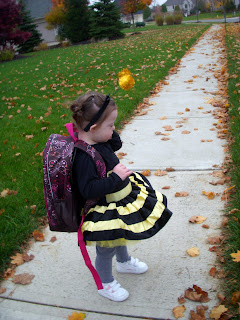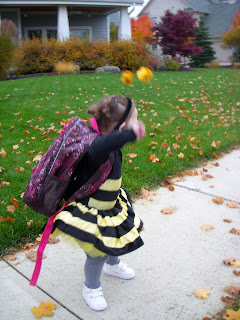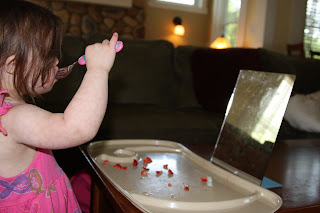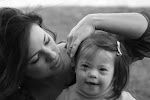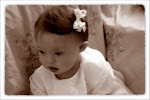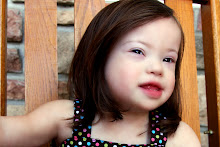I usually cringe a little (sometimes a lot) when I hear or read a professional assessment of Bridget (from doctors, therapists, service coordinators or educators), because Bridget cannot be described by a certain number of chromosomes, by a list of health concerns, by a score on a standardized test, or by the answers to questions on a fill-in-the-bubble developmental inventory.
She is an amazing little girl who deserves to be seen as such.
Wendy echoed this thought on Zip-Perdue-Dee-Dah the other day:
I think what bothered me was that here we are at the start of the next chapter and to the powers that be Kira is a pile of paperwork and "Down syndrome". And while I have no doubt that they will love my daughter, it's not because she has Down syndrome. She's my smart, beautiful, funny daughter not a bunch of test results and check marks on a development chart.Before Bridget's evaluations to see if she would qualify to receive preschool services and therapy through our local schools, I worried about the very same things. I didn't want to overwhelm school district personnel with volumes of information about Bridget, but I wanted them to see more about her than the limited perspective formal evaluations would provide. I knew the evaluations would detail Bridget's delays and areas of need. I wanted the team to see her many skills and abilities, to see that she is loved and cherished and supported, and to understand her huge potential. I wanted them to see her as a person. So this is what I sent in with her paperwork...
A Snapshot of Bridget at Age 3
Bridget is a social, sweet little girl who loves to explore, pretend, and laugh. She’s alert, expressive, playful, secure and spirited. She takes turns, consoles, and interacts with others.
Bridget knows just what she wants and how to get it. She communicates through a combination of signs, spoken words, sounds, gestures and facial expressions.
She understands most of what she hears, and remembers most of what she learns. She likes routines, but is also usually willing to try new things.
She’s generally agreeable, but has ideas of her own that she will make known. Bridget is affectionate and pays close attention to what is going on around her. She’s physically strong, and strong-willed.
She’s showing an interest in—and emerging skills in—counting, letters, recognizing shapes, drawing, running, jumping, enjoying books, large motor play, and spoken language.
Bridget is capable of so much and full of potential.
We look forward to seeing her grow and enjoy school next year!

We believe that Life is a gift, and that Bridget is a gift. We believe that all people are always in the process of becoming--and that all people seek to find meaning in Life. We value Bridget as a person and as a family member.
As her parents, our goal is to be educated and able to make informed decisions about Bridget's care and to be the very best advocates for her in all arenas. We will approach her learning with creativity and dedication. We will work willingly with teachers, therapists, administrators and other care providers to create and carry out an appropriate plan for Bridget’s growth and participation in the classroom.
We’d like to see cues-based instruction whenever possible, or encouraging Bridget to acquire skills as she shows readiness (instead of "teaching" her from a pre-existing plan based on standard development scales).
Bridget is reaching milestones on her own timeline, and has her own set of talents and limitations. We’d like to pay attention to her gifts while offering her opportunities to grow.
We believe strongly in Bridget--in her abilities and potential--and in her right to be treated with love and respect. We realize that she will benefit from specialized services and are committed to giving her every type of support and encouragement to be as happy, healthy and independent as she can be.
